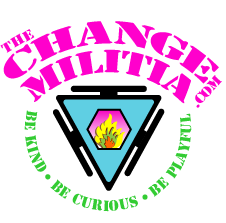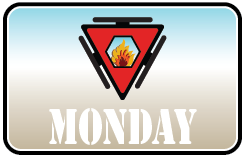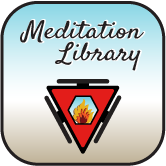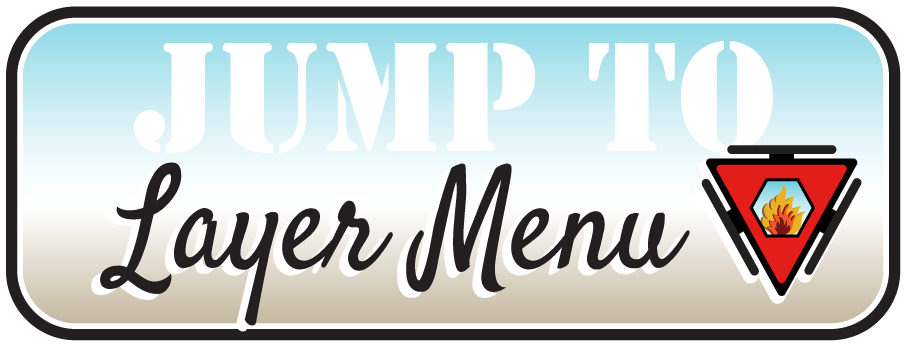Layer Eleven, Week Two – Sunday
- Read Week Two Concepts
- Watch videos and read descriptions for Distancing and Boxes and Impossibilities
- Do Movements – Distancing and Boxes and Impossibilities
Sunday’s Focus
Reflect on the focuses from last week. Make a hierarchical list of your limiting patterns. Which is the most grievous? Next?
Sunday’s Concepts
Understanding your limiting ranges is incredibly valuable. Your limiting ranges restrict, regulate, and restrain every aspect of all your actions and every interaction.
Limiting ranges are the primary source of your triggers and you burn a huge amount of energy maintaining them. Limiting ranges hamper, confine, and restrict every facet and feature of all your bodies and every component.
Your limiting ranges are the biggest hindrance to your ability to be empathetic, creative, and intimate.
What are limiting ranges and how do they affect your ability to be empathetic, kind, curious, and connected? Let’s take a series of possibilities to illustrate.
Scenario: You are about to walk into a supermarket and a 20-something kid approaches you wearing a filthy flannel shirt, tattered jeans, and an overstuffed knapsack. He smells like a foul olfactory soup of patchouli, body odor, and ganja.
Possibility #1 – Shrink Wrapping: Something deep inside your head instructs “Don’t look or acknowledge him, give a quick shake of your head and keep moving.” Is this you? If it is, it should be pretty clear you are not being empathetic, kind, curious, and certainly do not have any desire to connect. That is not necessarily good or bad, but it is your current reality.
The limiting range here is profound and intense. There is a severe limiting of potential with nothing outside of a narrow preconception allowed. Can you put yourself in this situation? If so, can you feel the tightening, narrowing, and compression in each of your bodies?
There will undoubtedly be physical tension as you assume a defensive posture. Emotionally, you deaden yourself and mentally, you shut down every other line of thought. You retract your environmental body so that it doesn’t extend past your skin. Energetically, you narrow your bandwidth into a tight box with two doors, fight or flight. You shrink wrap yourself so tightly that no other opportunity can exist or penetrate your defenses. You stay in threat assessment without the prospect of relaxation, connection, or interaction.
Most importantly, can you feel how this reaction lacks awareness? It is completely controlled and directed by your subconscious mind. You are a marionette to your reactions and your conscious mind is locked backstage, an understudy never seeing the lights or the audience.
Layer Eleven, Week Two – Monday
- Read Monday Concepts
- Do Movements – Distancing and Boxes and Impossibilities
Monday’s Focus
What body do you limit the most? (Physical, mental, emotional, energetic, or environmental)
Monday’s Concepts
Possibility #2 – Buffering: Your subconscious mind flashes you the “Dirty Hippy” sign with the subtitle “probably wants me to give him money” and the subtext “he looks hungry, I’ll give him $5.00.” That is kind and may be slightly empathetic and shows a nominal desire to connect but doesn’t show any curiosity.
This option brings you into superficial contact. You acknowledge his presence but not his individuality or his individuated essence because the attached subconscious label remains. The label helps your subconscious mind to identify a familiar invulnerable or comfortably secure space. The “Dirty Hippy” label links to the subconscious desire to evaluate threats. Your past safe experiences with dirty hippies allows your subconscious mind to move from threat assessment to familiar. The label discounts him as a threat and shifts you into your familiar range.
Remember the three tiers, first, your subconscious mind looks for threats. When it doesn’t find any, usually by comparing current scenarios to past scenarios, it looks to confirm your comfort zones or familiar ranges. In this case, giving money creates an exit plan that is familiar and it reduces the current threat of prolonged contact. The feeling of giving money is comforting. It may even reduce conscious or unconscious tension, like held guilt and social anxiety.
People, including you and me, use labels as distancing mechanisms to define and maintain buffers between ourselves and others. They are fictional but serve to soothe our subconscious fears of connection and intimacy. They are fictional because they arise by comparison to past events, not current events. You have memories of gifting money to the needy that ended with you going merrily on your way. Dirty hippies have never been a problem for you in the past. They have been general unassuming and friendly. That may or may not be the case in any given moment.
Layer Eleven, Week Two – Tuesday
- Read Tuesday Concepts
- Do Movements – Distancing and Boxes and Impossibilities
Tuesday’s Focus
From Monday’s Concepts, in what situations do you buffer? Where do you keep your contact superficial by using labels to maintain distance?
Tuesday’s Concepts
Possibility #3 – Compassion: You see the man as a “fellow human” and consider starting a conversation. You plan to ask questions and look for mutually beneficial opportunities. You think about how you might help and ways to offer as much support as you can. You begin to create an emotional connection to the idea. You feel the potential build, warm to it, and pat yourself of the back for being so caring.
By the time your inner soliloquy is complete, you are on aisle 4 looking at organic coriander seeds and wondering how you got there. The energy of the potential is still flowing through your system but now it has no direction. It becomes a vague expansion without an anchor point. As you shop, probably grabbing stuff you normally wouldn’t buy to help you diffuse your energy, the potential collapses.
This is how most people feel compassion. They create a generalized inner narrative that becomes the center of their universe. They dramatize a potential action and then fashion a fictional world around it. In the above example, you start with a point of potential contact, starting a conversation. Next, you fictionalize how that conversation might develop. Then, you project a possible sequence that might follow. You invent a storyline and then start writing chapter outlines and filling in basic details.
And the instant you start the process, you disengage from reality. You disconnect from every tangible action. You distance yourself by retreating into the warm butterscotch pudding of your imagination.
Layer Eleven, Week Two – Wednesday
- Read Wednesday Concepts
- Do Movements – Distancing and Boxes and Impossibilities
Wednesday’s Focus
From Tuesday’s Concepts, where do you generate a general narrative that serves to disconnect and distance you from others? Where does your compassion disengage you from potential opportunities?
Wednesday’s Concepts
Possibility #4 – Projection: Your subconscious mind flashes you the “Underprivileged Youth” sign with the subtitle “He probably hasn’t had a decent meal in days” and the subtext “you must help, offer to buy him some food and drive him to a shelter.” That is kinder and may be empathetic and shows greater desire to connect but doesn’t show any curiosity. It is complete presumption.
This possibility also creates a disconnect by generating a narrative. While compassion is a generalized narrative, projection is specific. You connect with the idea and elaborate story you create and not with the individual. You generate emotional energy toward the label underprivileged youth. You add emotional energy to the idea (not fact) that he is hungry. You compound that emotional energy by projecting the future kindness of gifting food and driving him to the shelter.
Can you feel how none of this is actually happening? Can you feel how this mental and emotional posturing removes you from being present in the moment? Can you feel how it unbalances you? Your center moves from your low belly to the middle of your story creation.
Your solution is based on the presumption that your story is correct. He may have just eaten at the local shelter. He might have food allergies that would keep him from eating some or all the food you would buy. He might have claustrophobia and even the mention of a car ride could send him into catatonic shock.
The instant you go into story creation, you disconnect from yourself, others, and your environment. You enter Fantasy Island.
Layer Eleven, Week Two – Thursday
- Read Thursday Concepts
- Do Movements – Distancing and Boxes and Impossibilities
Thursday’s Focus
From Wednesday’s Concepts, when do you typically create a projection, a specific narrative?
Thursday’s Concepts
The possibilities would be endless but let’s swing to the one that meets the desire to be empathetic, kind, curious, and connected. Let’s look for the magic possibility that will allow you to change the world from the inside out.
Possibility #5 – Alchemy: As you drive into the parking lot, you assess the energies and flows. You take it all in and use all that energy to help radiate your intentions to be empathetic, kind, curious, and connected.
You actively feel the configurations of the store, its occupants, and the collective energy. As you approach the store, you are aware of the energy of the other people entering or exiting the building. You feel their relative balance or imbalance. You feel their fear, resistances, and limiting patterns. You feel their love, affection, and dreams.
This is not a thinking process. This is a feeling process.
As a young man approaches, you feel him, you feel his energy configuration and any ongoing transitions. You feel his habitual defenses. You feel his limiting patterns. You feel his depth and breadth, his fears, and affections. You feel his heart and his soul.
You reconfigure your energy to resonate with his energy and dispel or soothe his fears. Your non-threatening and non-judgmental energy gains a measure of trust and a lowering of his defenses. You smile welcomingly and greet him openly. As you feel him soften, you begin to increasingly radiate your feelings of empathy, kindness, curiosity, and connectedness.
You wait and allow the potential and opportunities to manifest.
Layer Eleven, Week Two – Friday
- Read Friday Concepts
- Do Movements – Distancing and Boxes and Impossibilities
Friday’s Focus
From Thursday’s Concepts, can you imagine this level of awareness and empathy? Do you have experiences that are similar? Can you imagine what it would be like to feel this deeply and then wait and allow?
Friday’s Concepts
From here anything can happen. He might tell you that you left your lights on, invite you to a Gathering of Souls, or just tell you how much he likes your Birkenstocks. He might tell you he is doing research for his book about prejudice and intolerance.
He might recognize you as the parent of a friend, or ask for directions to the nearest airport where his private jet can land. … and after you offer to drive him to the airport, he buys you lunch while you wait for his plane and you agree to accompany him and his family to their estate in Majorca next month. There is talk of a yacht, a personal chef, and a possible highly paid job as a world-traveling activity scout.
His jet is too big to land at the local airport and you drive him to the regional hub. A week later, the itinerary and tickets for your trip arrive in the glovebox of a Tesla X, a thank you gift for the inconvenience of driving him to the airports.
Possibility #5 happens all the time, every day, and in an infinite number of ways. Things like #5 happen at the confluence of empathy and curiosity, fueled by a supreme obsession with wonder. They happen when the passion to feel more deeply, be more intimate, and experience the world more fully become your preeminent way of being. For our purposes, let’s call this confluence, alchemy.
The magic of alchemy happens outside the confines of your limiting ranges.
Layer Eleven, Week Two – Saturday
- Read Saturday Concepts
- Do Movements – Distancing and Boxes and Impossibilities
Saturday’s Focus
From Friday’s Concepts, do you have examples of alchemical magic you can recall? What aspect of your life feels impossible? How can you increase your sense of wonder and unlimit your perceptions enough to allow alchemy to happen?
Saturday’s Concepts
Let’s talk a bit about magic, alchemy, and mysticism.
From Wikipedia: Mysticism is popularly known as becoming one with God or the Absolute, but may refer to any kind of ecstasy or altered state of consciousness which is given a religious or spiritual meaning. It may also refer to the attainment of insight into ultimate or hidden truths, and to human transformation supported by various practices and experiences.
The last sentence is the one I would like to expand upon (pun intended).
The process you have been playing with in the last 42 weeks has brought you to this point. The concepts, focuses, and movements have prepared you to bridge the gap between the conceivable and the inconceivable.
You are on the precipice of discovery but it will take a leap of faith, an allowance that what your mind perceives is just a fraction of what is available to experience.
Shifting to an empathetic focus on energy movement, potential, and opportunity requires subjugating your mind to your sensing bodies. It requires almost totally devaluing your thoughts, beliefs, and patterns. It requires stepping past the limits of what is empirically proven by current scientific means.
Mystical humans have been able to blur the line between what society sees as rational and connect to the world beyond the purview of the masses. The opportunity you have is to connect to this mystical world. Science and society will catch up, but maybe not in your lifetime. All great discoveries have been made by visionaries who have chosen to see the world in a new, amplified and broader, way. People have used the magic of alchemy to change the world.
I wear a watch that tracks my heart rate, talks to satellites, and processes more data than supercomputers of the 1970’s. The progression of science happened because someone or a group of people began to believe in the inconceivable.
Neuroplasticity is your brain’s, and for our purpose, your mind’s, ability to reorient itself to changing realities. It is your brain’s and mind’s ability to remap itself, change the way information processes and where it is processed. It changes what it perceives.
I believe you can decide to rewrite your conscious awareness, to increase its scope, and to feel your existence in a new way. A new way that transcends what you believe is possible, attainable, or even real.
It starts with increased awareness, progresses to sensory acuity, which develops into empathy, and from there to what lies beyond in the realm of the alchemists and the mystics.
Next week … the first six keys to the realm.
Distancing
Step 1 – Throughout your day, begin to become increasingly aware of the comfortable and familiar distances you maintain. Where are your boundaries?
Step 2 – How are those boundaries or distances different between different people or in different situations?
Step 3 – Identify your habitual distances for everything, everyone, and the situations you find yourself in.
Step 4 – Don’t look for the why, just identify where that boundary or distance is.
Step 5 – Where are your buffer zones and how are they influenced by changing circumstances.
Step 6 – What is your level of trust? What are the physical, mental, emotional, and energetic boundaries of that trust?
Step 7 – What is the underlying fear behind the need to trust?
Step 8 – How do you limit your expression so that your subconscious mind can feel safe?
Why it Matters – Creating safe distances are one of the primary ways you limit yourself and are great illustrations of your limiting patterns. Identifying them is the first step that will lead to eliminating them.
Everyday Usability – Boundaries give a false sense of security and require constant vigilance … which is exhausting. Constant vigilance also keeps you in threat assessment mode.
Progression – After you are familiar with your distancing habits and patterns, begin to play with softening them. Be yourself more. Defend your space less. Open to possibilities you have never considered or that you thought were impossible.
Boxes and Impossibilities
Step 1 – This is another awareness exercise. As you are out in the world begin to identify what boxes you create.
Step 2 – Recognize what boxes you put situations, people, actions, possibilities, and opportunities into.
Step 3 – What are your existing physical, mental, and emotional beliefs about the people, things, places, and situations that you encounter? What is possible?
Step 4 – Next, begin to question and identify what seems impossible within any given circumstance or connection.
Step 5 – What doesn’t fit into the boxes you have created?
Step 6 – Recognize that your boxes limit potential and opportunities.
Step 7 – Begin to question the validity of your boxed beliefs.
Step 8 – Ask yourself what might be achievable if you allowed the impossible to become possible?
Step 9 – Begin to focus your energy and awareness to what is outside your boxes with the people, circumstances, and situations in your life.
Step 10 – Increase your sense of wonder and curiosity about how you can make the impossible possible.
Why it Matters – Creating boxes limits your ability to expand and grow. Boxes limit your capacity to identify opportunities.
Everyday Usability – Creating a habit of searching outside your boxes will shift every perception and relationship you have. Every optimal solution exists outside of a current box. Efficiency, success, and innovation all live outside of the existing boxes you create.
Progression – As you get better at identifying your boxes, begin to prioritize focusing your awareness on what lies beyond the boxes.

















